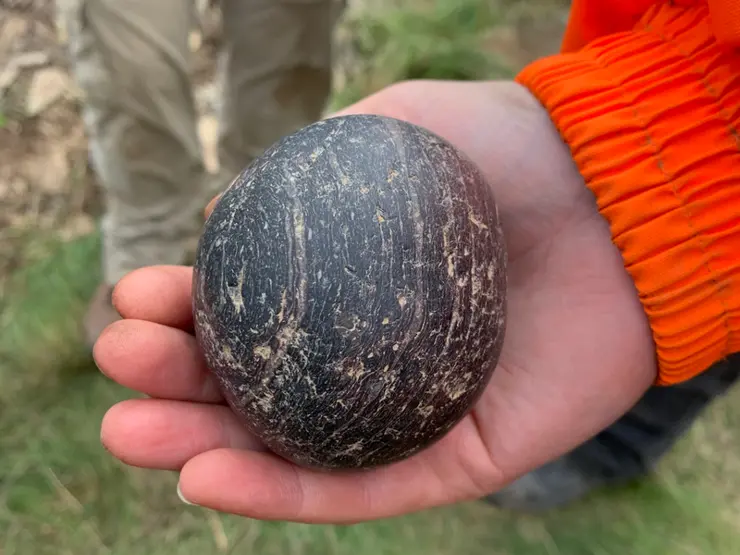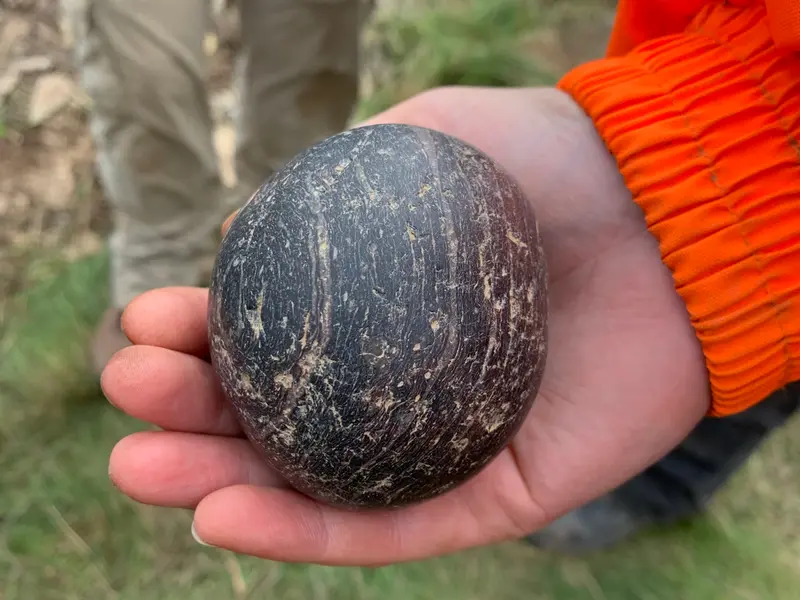Two polished stone balls some 5,500 years old are among finds that were discovered in a tomb on the southernmost tip of Tresness peninsula on Sanday, in Scotland's Orkney Islands by our archaeologists and National Museums Scotland in September 2021.
The team has been excavating the site for the last few years as the tomb stands on a cliff that is slowly crumbling into the sea.
The original purpose of these balls is not clear — they would have taken a lot of time to make and they could have been objects of prestige, or possibly weapons or ceremonial items.
Professor Vicki Cummings discovered both balls in the Neolithic tomb.
Professor Cummings said: '‘Our previous work at Tresness, especially in 2019, had indicated that we were dealing with a very well-preserved stalled cairn, albeit one that had been significantly altered in parts in the early Bronze Age. In 2019 we revealed a stalled cairn divided into at least five separate cells or compartments.
'‘The southernmost cell is partly eroded into the sea, but we think this was the final cell at this end of the monument, although we will never know for sure.''
The team are analysing the contents of the tomb's various chambers, to determine the order in which the different parts of the monument were constructed.
The last excavation of a stalled cairn was in the 1980s, and since then scientific advances in archaeology enabled the team to gain permission to work at the site and retrieve valuable information before the site disappears. Professor Cummings said, “At the end of the day, sadly this is a site that is disappearing into the sea so we are extracting this information before it is lost forever.”
The story was covered widely in the media, including the Scotsman, the Smithsonian and the Daily Mail.
You can read more about the excavations at Tresess in their blog.


